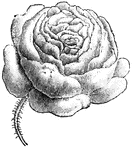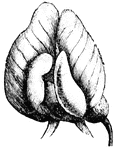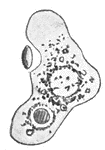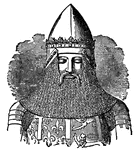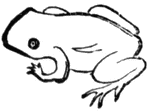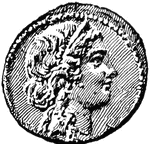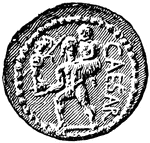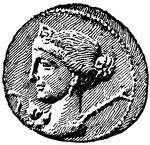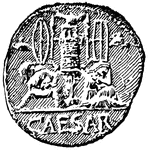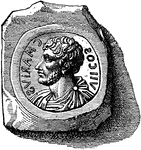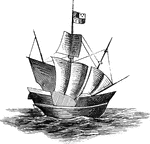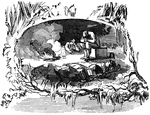
Midnight in the West
"Camp life in the West. During one of the pauses in the active part of the Missouri campaign our special…
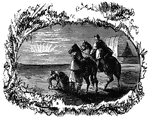
Sunrise in the West
"Camp life in the West. During one of the pauses in the active part of the Missouri campaign our special…
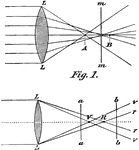
Aberration
"In optics, a deviation in the rays of light when unequally refracted by a lens or reflected…

Rosetta Stone Sample
"In 1799, the Rosetta Stone was found and gave the first key to the reading of hieroglyphics. On this…
Rosetta Stone
"In 1799, the Rosetta Stone was found and gave the first key to the reading of hieroglyphics. On this…
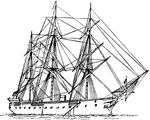
A-cockbill
"Nautical-with ends pointing upward. Image: Man-of-war with Yards a-cockbill."-Whitney, 1902

Agrenon
"A net-like woolen garment worn by bachanals and soothsayers in ancient Greece. Image: Toso of Apollo…

Ailette
"A plate of iron worn over the mail to protect the shoulders of a man-at-arms, before the introduction…
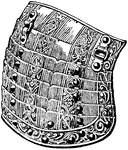
Almain-rivet
"One of a series of short pieces of metal sliding in slot-holes formed in overlapping plates of armor,…
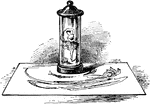
Anamorphoscope
"An optical toy consisting of a vertical cylindrical mirror which gives a correct image of a distorted…

Anamorphosis
"A method of drawing which gives a distorted image of the object represented when it is viewed from…

Anther
"Image: Anther of Aquilegria. The essential polliniferous part of a stamen, generally raised upon the…

Anther
"Image: Anther of Aquilegria, expanded. The essential polliniferous part of a stamen, generally raised…

Anther
"Image: Anther of Lilium. The essential polliniferous part of a stamen, generally raised upon the extremity…
Anther
"Image: Anther of Berberis. The essential polliniferous part of a stamen, generally raised upon the…
Anther
"Image: Anther of Solanum. The essential polliniferous part of a stamen, generally raised upon the extremity…

Anther
"Image: Anther of Ecbalium. The essential polliniferous part of a stamen, generally raised upon the…

Antheridia
"Image: Branch of Fucus. The organ cryptogamic plants which answers to the anther in the phanerogamic…

Antheridia
"Image: Antheridia of a moss surrounded by paraphyses. The organ cryptogamic plants which answers to…

Arc Boutant
"The main rib or arch-band which crosses a vault at right angles and separates adjoining bays from each…
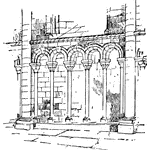
Arcature
"An arcade of small dimensions, such as a balustrade, formed by a series of little arches. Image: Arcature.-…
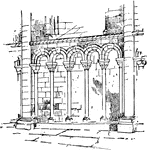
Arcature
"An arcade of small dimensions, such as a balustrade, formed by a series of little arches. Image: Arcature.-…

Diagram of the Eye
"Diagram illustrating the Manner in which the Image of an Object is inverted on the Retina." — Blaisedell,…
Amphitheatrum
"An amphitheatre was a place for the exhibitions of public shows of combatants and wild beasts, entirely…
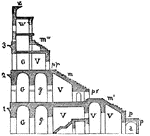
Amphitheatrum
"An amphitheatre was a place for the exhibitions of public shows of combatants and wild beasts, entirely…

Aratrum
"A plough. Among the Greek and Romans the three most essential parts of the plough were-the plough tail,…

Aratrum
"A plough. Among the Greek and Romans the three most essential parts of the plough were-the plough tail,…

Arcus
"The bow used for shooting arrows, is one of the most ancient of all weapons, but is characteristic…
Arcus
"The bow used for shooting arrows, is one of the most ancient of all weapons, but is characteristic…
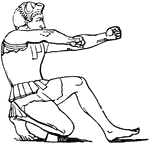
Arcus
"The bow used for shooting arrows, is one of the most ancient of all weapons, but is characteristic…

Balneum
"Balneum or balineum signifies, in its primary sense, a bath or bathing vessel, such as most Romans…
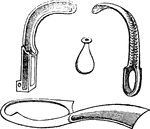
Balneum
"Balneum or balineum signifies, in its primary sense, a bath or bathing vessel, such as most Romans…

Basilica
"A building which served as a court of law and an exchange, or place of meeting for merchants and men…
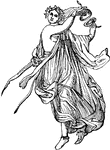
Calceus
"A shoe or boot, anything adapted to cover and preserve the feet in walking. The use of shoes was by…

Calceus
"A shoe or boot, anything adapted to cover and preserve the feet in walking. The use of shoes was by…

Corona
"A crown, that is, a circular ornament of metal, leaves, or flowers, worn by the ancients round the…
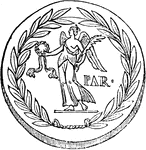
Corona
"A crown, that is, a circular ornament of metal, leaves, or flowers, worn by the ancients round the…

Drachma
"The principal silver coin among the Greeks. The two chief standards in the currencies of the Greek…

Drachma
"The principal silver coin among the Greeks. The two chief standards in the currencies of the Greek…
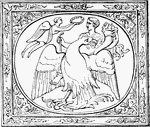
Apotheosis of Germanicus
"By a beautiful image, the mother herself, who is so deeply interested in the fortunes of her son, is…
Telescope
"A telescope is an instrument designed for the observation of distant objects, and consists essentially…
Terrestrial Telescope
"The spy-glass or terrestrial telescope avoids the inversion of the image by the interposition of two…
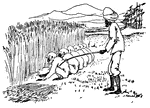
Legend of Evil
Image from the story, "Legend of Evil." The farmers caught our fathers and set them to work.
